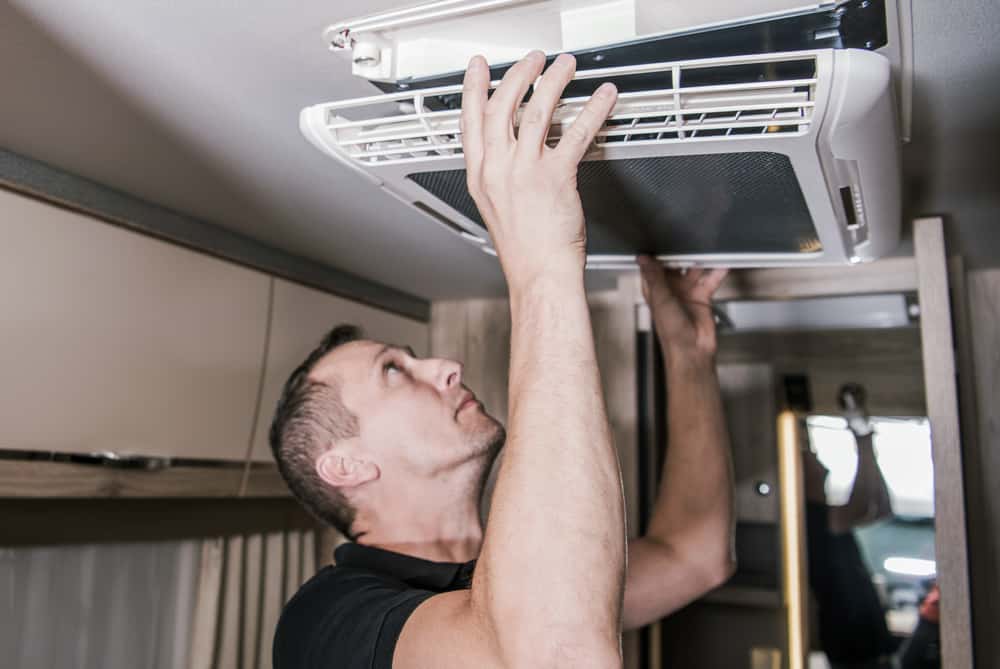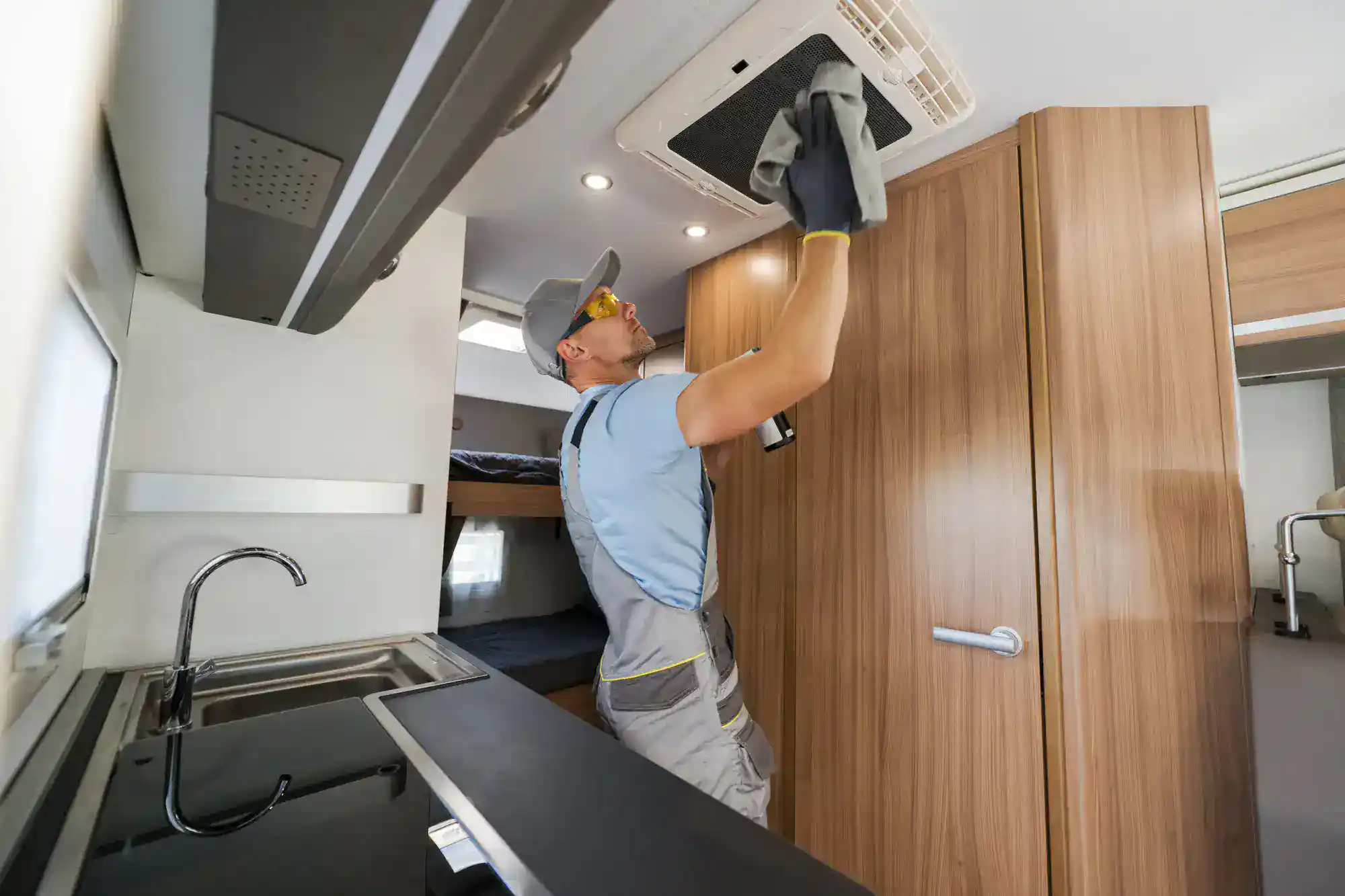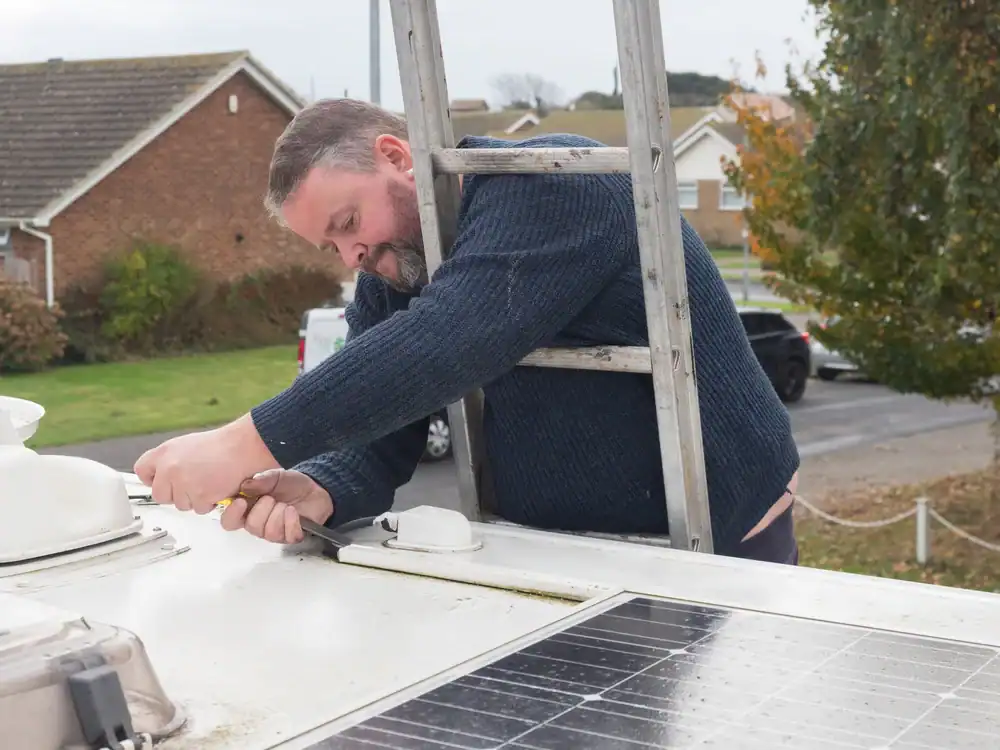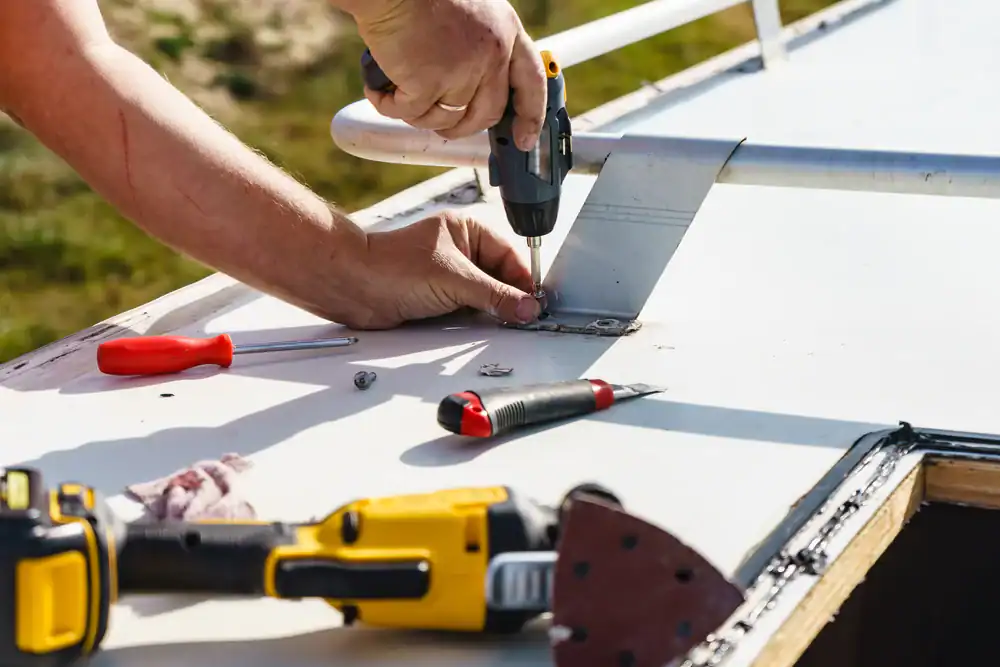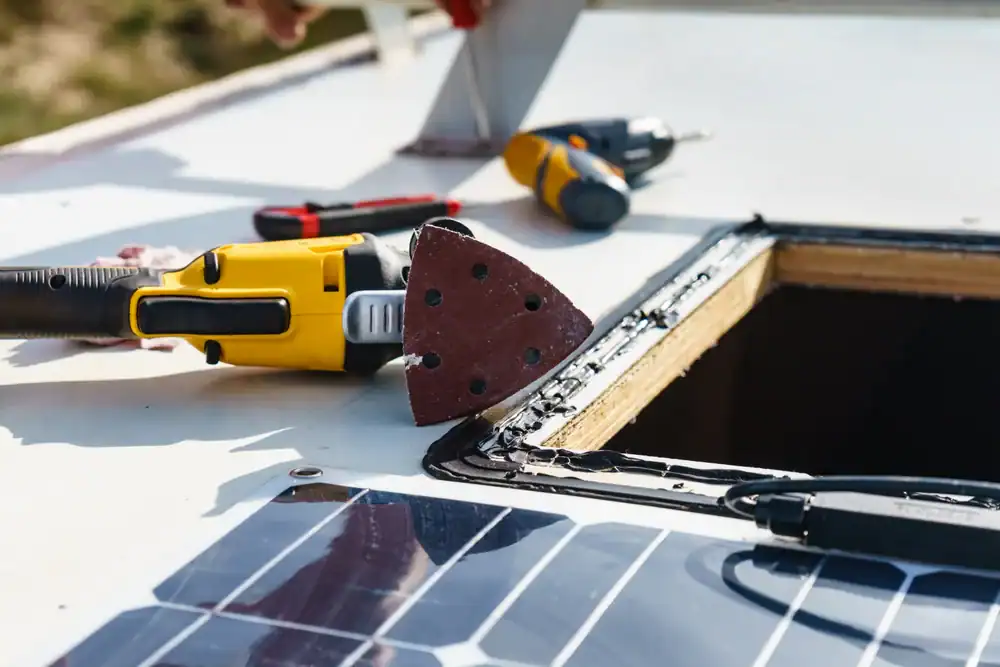Summary:
Early Warning Signs of RV Roof Water Damage
Water damage rarely happens overnight. Your RV roof will show you warning signs weeks or even months before you see that first ceiling stain. The trick is knowing where to look and what you’re actually seeing.
Start with your ceiling and walls during your regular walkthroughs. Discoloration doesn’t always mean active leaking – sometimes it’s old damage that’s been sealed. But any new spots, especially ones that change size or color, need immediate attention.
Check around all roof penetrations too. Vents, air conditioning units, antennas, and skylights are common trouble spots where sealant fails over time.
Visual Signs Inside Your RV
The most obvious signs show up inside your RV first, but by then water has already been getting in for a while. Ceiling stains are the classic red flag – usually starting as small yellow or brown spots that grow larger over time. These stains often appear near roof seams, around air conditioning units, or close to other roof-mounted equipment.
Peeling wallpaper or paint is another dead giveaway. Water gets behind the surface materials and causes them to lose adhesion. You might notice bubbling paint or wallpaper that feels soft when you press on it. This is especially common around windows and in corners where water tends to collect.
Soft spots in your ceiling or walls mean the underlying structure is getting damaged. Press gently on suspicious areas – if they give more than they should, water has likely compromised the wood or insulation behind the surface. This is serious damage that needs professional attention quickly.
Don’t ignore musty odors either. That damp, moldy smell often shows up before you see visible damage. It’s your nose telling you that moisture is trapped somewhere it shouldn’t be. In Durham County’s humid climate, this can happen faster than you’d expect, especially during our wet springs and summers.
Water stains on furniture or personal items near exterior walls can indicate leaks that haven’t reached the ceiling yet. Sometimes water runs along interior framing before it shows up as ceiling damage, so pay attention to anything that seems damp without an obvious explanation.
What to Look for on Your RV Roof
The most obvious signs show up inside your RV first, but by then water has already been getting in for a while. Ceiling stains are the classic red flag – usually starting as small yellow or brown spots that grow larger over time. These stains often appear near roof seams, around air conditioning units, or close to other roof-mounted equipment.
Peeling wallpaper or paint is another dead giveaway. Water gets behind the surface materials and causes them to lose adhesion. You might notice bubbling paint or wallpaper that feels soft when you press on it. This is especially common around windows and in corners where water tends to collect.
Soft spots in your ceiling or walls mean the underlying structure is getting damaged. Press gently on suspicious areas – if they give more than they should, water has likely compromised the wood or insulation behind the surface. This is serious damage that needs professional attention quickly.
Don’t ignore musty odors either. That damp, moldy smell often shows up before you see visible damage. It’s your nose telling you that moisture is trapped somewhere it shouldn’t be. In Durham County’s humid climate, this can happen faster than you’d expect, especially during our wet springs and summers.
Water stains on furniture or personal items near exterior walls can indicate leaks that haven’t reached the ceiling yet. Sometimes water runs along interior framing before it shows up as ceiling damage, so pay attention to anything that seems damp without an obvious explanation.
When RV Roof Damage Requires Professional Repair
Some RV roof issues are DIY-friendly, but others need professional attention to avoid making the problem worse. Knowing the difference can save you money and prevent further damage to your RV.
If you’re seeing active leaks, structural damage, or problems with major roof components like air conditioning units, it’s time to call in experts. The same goes for any damage that affects the integrity of your roof membrane or involves electrical components.
Professional RV roof repair makes sense when you need the job done right the first time, especially for complex issues or when you’re not comfortable working at height.
DIY Repairs vs Professional RV Roof Repair
Small sealant touch-ups and minor maintenance tasks are usually fine for DIY work if you’re comfortable and have the right materials. Cleaning your roof, applying new sealant to small gaps, and replacing basic hardware can often be handled without professional help. The key is being honest about your skill level and the scope of the problem.
However, major repairs require professional expertise. If you’re dealing with large tears in rubber roofing, structural damage, or problems that involve removing and reinstalling major components, you need someone who knows RV construction. Unlike house roofs, RV roofs have unique challenges – they flex while driving, deal with constant vibration, and use specialized materials and techniques.
Electrical components add another layer of complexity. Air conditioning units, vent fans, and other roof-mounted equipment often involve electrical connections that need to be handled safely. Getting this wrong can create safety hazards or cause expensive damage to your RV’s electrical system.
Insurance considerations matter too. Some insurance companies require professional repairs for major damage, and DIY work that goes wrong might not be covered. If you’re dealing with significant water damage or structural issues, check with your insurance company before starting any work.
Professional RV roof repair also makes sense when time is a factor. If you need your RV ready for an upcoming trip or you’re dealing with active leaks that are causing ongoing damage, professionals can get the job done quickly and correctly. They have the right tools, materials, and experience to diagnose problems accurately and fix them the first time.
Choosing the Right RV Roof Repair Service
Not all roofing contractors understand RVs. Your motorhome or travel trailer has different requirements than a house, and using the wrong materials or techniques can cause more problems than you started with. Look for services that specifically work on RVs and understand the unique challenges of mobile roof systems.
Experience with your type of roof matters. Rubber roofs, fiberglass roofs, and metal roofs all require different repair approaches and materials. A contractor who primarily works on rubber roofs might not be the best choice for fiberglass repair, and vice versa. Ask about their experience with your specific roof type and the materials they use.
Local knowledge is valuable too. Durham County’s climate creates specific challenges for RV roofs – high humidity, sudden temperature changes, and seasonal weather patterns that can accelerate certain types of damage. We understand these conditions and can recommend solutions that work well in our area.
Get a clear assessment before any work begins. A good RV roof repair service will inspect your entire roof system, not just the obvious problem areas. They should explain what they find, why it happened, and what options you have for repair. Be wary of anyone who wants to start work immediately without a thorough inspection.
Ask about warranties and follow-up service. Quality roof repairs should come with guarantees, and the contractor should be available if issues arise after the work is complete. This is especially important for RV repairs since you might be traveling when problems show up.
Consider the timing and scheduling flexibility. RV owners often have travel plans that can’t be easily changed, so look for services that can work with your schedule and get repairs completed quickly when needed.
Protecting Your RV Investment with Proper Roof Care
Catching RV roof water damage early is always cheaper and less stressful than dealing with major repairs later. Regular inspections, prompt attention to small problems, and knowing when to call professionals can keep your travels on track and your RV in good condition.
The key is staying proactive rather than reactive. A few minutes checking your roof and interior every month can save you thousands in repair costs and prevent the headaches that come with major water damage.
When you do need professional help, we at Stream RV understand the unique challenges of RV roof repair and the importance of getting you back on the road quickly and safely.

